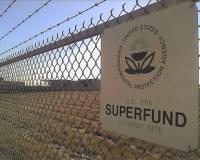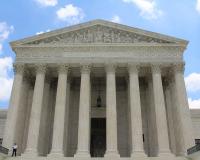
Vibrant Environment
Governance And Rule Of Law
All | Biodiversity | Climate Change and Sustainability | Environmental Justice | Governance and Rule of Law | Land Use and Natural Resources | Oceans and Coasts | Pollution Control

Elephants are amazing animals and perhaps our most enduring mental image of Africa—large, untamed, inexhaustible. That image can also distract us from the unpleasant historical and current realities of colonization and exploitation of Africa and Africans, including African elephants. Evidence of this is like air, it’s all around us. So, like air, it goes unseen, like the fresco above the south entrance to the Federal Trade Commission building, here in Washington, D.C., portraying an obviously western man, extending a money bag to an apparently African man, who is on bended knee and holding an ivory tusk.

First plastic bags, then straws, and now . . . miniature toiletries.
In a world where half the plastic produced globally is packaging we use just once, and only nine percent of all plastic is recycled, a consumer tide against single-use plastics is sweeping up grocery retailers, restaurants, and now the hospitality industry.

I’ve conducted research on global climate change and on nuclear waste disposal, but vapor intrusion (VI) is the most challenging topic I’ve worked on during my 40-year career. VI’s technical challenges relate to its multimedia nature and the need to understand pollutant fate and transport both above and below ground.

50-year celebrations typically feature nostalgic reminiscings about a great run, as with golden wedding anniversaries, or a gauzy look back at a humble beginning for a now-mature organization.
The Environmental Law Institute’s 50th year celebration is different.

Judges rely on precedential case law and legal interpretation in issuing their decisions, but with an increasing number of court cases relying on scientific evidence, judges must also understand the science to ensure a sound judicial process. Accurately deciding such cases not only determines the case at hand, but could set the precedent for similar cases in the future.

Last month, the New York Times reported that the Trump Administration began drafting a new rule that could eviscerate one of the most powerful tools available to U.S. citizens to hold the government accountable for environmental harm. The new rule, if finalized, would prevent concerned citizens from filing cases with the U.S. EPA Environmental Appeals Board (EAB), as well as inherently change EPA’s appeals process and undermine enforcement of environmental law throughout the country.

In 1974, I was a trial lawyer with Cummings & Lockwood in Stamford, Connecticut, with a lifelong interest in the environment. EPA had been recently created, Congress had just passed two new laws to protect air and water quality, and President Kennedy had made service in the federal government a noble calling.

In the last two weeks, Indonesian islands Sumatra and Borneo began experiencing severe forest fires, evoking fears within the region that the fires could have similar effects to the fires of 2015, which was one of the worst years for transboundary haze in Southeast Asia. Following the 2015 fires, Indonesia took steps to limit the burning and draining of peatland to reduce the outbreak of fires in addition to improving environmental sustainability and air quality in the region. However, due to a combination of governance challenges and climate change-intensifying dry seasons, the country has struggled to keep up with implementing fire mitigating activities in all fire-prone areas.

With summer in full swing and trips to the beach on our minds, the timing is perfect to consider the role of environmental law and the courts in guiding decisions with implications for the health of our oceans. This blog highlights recent updates from two major federal players with authority over what happens in the waters of the United States covering the three- to 200-mile exclusive economic zone (EEZ): the National Oceanic and Atmospheric Administration (NOAA) and the U.S. Department of the Interior (DOI).

Fifty years ago, on June 22, 1969, the Cuyahoga River of Ohio burst into flame. Although it was not the first time an oil slick burned on the heavily polluted river, the event is often credited as one of the key environmental crises that galvanized the American public to recognize that pollution and other environmental damage were not just local problems, but required national attention.